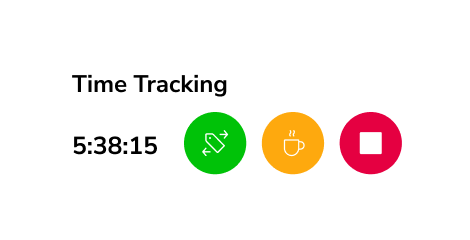How to Meet Deadlines When Working Remotely
2025
Remote work, for all its flexibility and comfort, has a hidden cost: time feels less concrete.
Without physical cues like face-to-face communication, office chatter, or watching others move through tasks, time becomes abstract. And when time feels abstract, deadlines slip quietly through the cracks.
Meeting deadlines when working remotely isn’t just about better planning, it’s about completely rethinking how we engage with work when no one’s physically watching.
I don’t think this is a problem of laziness. It’s a systems problem. The home environment isn’t structured to support focused, sustained effort unless you deliberately shape it to do so.
To meet deadlines from your living room or spare bedroom, you must design a working world that holds you accountable, even when no one else can see what you’re doing.
Deadlines Only Work If You Treat Them Like Physical Events
When we’re in a traditional workspace, a deadline feels like a finish line with other runners beside us. Remotely, it’s easier to treat deadlines as suggestions – movable, fluid, secondary to more “pressing” things.
The key to reversing this is anchoring your deadlines in physical behavior and proven methods of organizing time. Print your schedule. Use a weekly planner. Write your task breakdown on paper. Create visual cues that make the intangible real.
There’s power in seeing the countdown. When you write it, put it somewhere visual, and track it, your brain starts engaging more seriously. Digital calendars are convenient and can also do the trick, so long as they’re treated as tangible tools.

Photo by Dylan Ferreira on Unsplash
You Can’t Hit a Target You Haven’t Fully Defined
One of the reasons remote professionals struggle with timelines is because we often work with blurred definitions of what “done” means. Is the project complete when the draft is submitted? Or when it’s reviewed, revised, and signed off? When your definition of completion is fuzzy, it’s impossible to pace yourself accurately.
Always define your outcomes in detail. Not just what needs to be done, but what format, length, quality level, and delivery method are expected. This removes the “gray zone” that causes delays.
Vague goals harm and extend timelines. Clear, well-bounded objectives accelerate progress. And don’t assume shared understanding with your client or manager – clarify, confirm, and write it down.
Make sure everyone understands the expectations of a task, and avoid under-delivering expectations.
Focus Isn’t About Trying Harder, It’s About Building Friction
Remote distractions are infinite and tempting when no one is around to see you. Even if you’re not watching cat videos, you’re switching laundry, responding to Slack, and cleaning the desk. All of it feels productive, but none of it moves you closer to the deadline. The trick to remote focus is introducing friction to the wrong activities, and flow to the right ones.
Make it harder to get distracted. Sign out of apps that tempt you. Block distracting websites for key working hours. Move your phone out of reach.
Meanwhile, make your work tasks easier to start. Pre-open the document you need. Write a one-line prompt. Before signing-off for the day, plan in detail exactly what tasks you are going to work on tomorrow, and make sure you have everything you need to get started.
Remote productivity isn’t about superhuman discipline. It’s about creating a work-friendly environment so that you have as little distractions as possible, as well as all the tools within reach to get your work done.
Visibility Builds Internal Pressure
When no one sees you working, the stakes feel lower. But there’s a way to turn visibility into a silent accountability system without turning your home into a fishbowl.
Share your goals for the day or week in a brief message to a team channel, a coworker, or even a friend. Don’t wait for managers to check in, build your own rhythm of reporting.
This micro-visibility creates an accountability structure similar to the environment within physical offices. When you know others are aware of your timeline, you naturally move with more urgency. It’s not about guilt. It’s about positive pressure in the right direction.
When you self-report consistently, you shift from avoidance mode to execution mode. You stop managing optics and start managing outcomes.

Photo by Nathan-Dumlao on Unsplash
Systems Save You From Energy Dips
Relying on motivation is not enough. Motivation fluctuates. Systems don’t. Especially in remote work, where no physical boundaries force you into or out of action, systems are your guardrails.
Build a set of rituals around starting and ending work. Use the same music, the same drink, the same light. Create a mental environment that cues your brain to switch modes in the same way a desk in an office would.
Habits save you when you’re tired, distracted, or mentally elsewhere. Systems don’t ask you how you feel. They guide you forward. When you design your remote day like a production line – clear entry, defined process, consistent output – you stop needing to summon energy. Your environment and habits do it for you.
The Midpoint is Where Most Projects Die
At the beginning of a project, energy is high. At the end, urgency kicks in. But in the middle? That’s where both the danger and the opportunity lives.
Remote workers often fall off track in that quiet middle ground, when there’s still time to delay and not enough pressure to push. This is when you need your tightest controls.
Schedule a midpoint review with yourself. Audit your progress. Is your timeline still accurate? Have any steps grown in scope? Are you procrastinating by polishing or researching instead of producing? The midpoint is a checkpoint. Make it visible. Make it count. It keeps the project from becoming another slow fade to panic.
Don’t Just Hit Deadlines – Deconstruct Them Afterwards
Every deadline you meet (or miss) is a learning opportunity. Don’t close the tab and move on.
Stop and unpack what actually happened. Where did time get lost? What steps took longer than expected? What shortcuts paid off, and which ones created problems later?
Use that data to adjust your system. Maybe you need to front-load more research. Maybe your writing estimates are too optimistic. This isn’t about post mortems for failure, it’s about building insights that makes future deadlines easier to hit. Progress isn’t linear. It’s iterative. Learn fast. Adjust faster.

Photo by Ryland Dean on Unsplash
Final Thoughts
Meeting deadlines when working remotely is less about discipline and more about systems. It requires designing an environment that reduces resistance, clarifies outcomes, and keeps you moving even when the natural momentum of an office is missing.
This isn’t about brute-forcing productivity. It’s about building methods and habits so solid that deadlines become a natural byproduct, not a last-minute scramble.
These techniques are not isolated tips, but part of a larger ecosystem. Treating deadlines like fixed events anchors your intentions. Defining targets with clarity prevents confusion. Building friction against distractions and flow toward meaningful tasks helps you move deliberately instead of reactively.
Micro-visibility replaces office pressure with self-accountability. Rituals and routines protect your energy when motivation fades. And midpoint reviews ensure projects don’t stall halfway through.
But perhaps most importantly, you need to treat each deadline not as a finish line, but as a feedback loop. Every project is a test of your systems. The question isn’t just “Did I deliver on time?” but “What made that possible or impossible?” When you analyze your process honestly, you upgrade how you work, not just what you deliver.
Remote work demands that you be your own manager, strategist, and motivator. But with the right structures in place, it’s entirely possible not only to meet deadlines consistently, but to do so with less stress and more confidence. You stop surviving your workload and start owning it.
That’s the shift worth making.
Related Articles:
How to Increase Focus and Productivity
Is Multitasking Really Good for Your Productivity?


